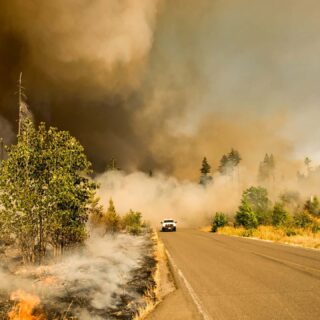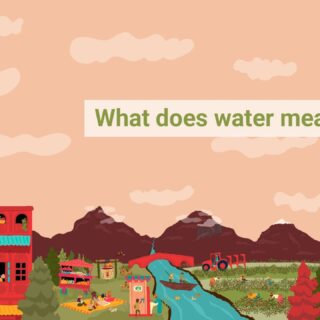Eyes on Glasgow
What to pay attention to at COP26
This is a very interesting place. She is the biggest city in Scotland and famous for its world-class shipyards. It might be even more interesting for the cold humour of the local people, which is best demonstrated by the statue of the Duke of Wellington in the city centre — this statue has been erected since 1844 but became memories in many people’s albums for wearing traffic cones. Her name is Glasgow.
At the end of this month, the city is going to attract global attention again, but this time not for its humour. COP26, the 26th Conference of Parties under the UN Convention of Climate Change, will be held in this city. This is yet another important event on climate change after the last COP held in Madrid, Spain 2019. It is also the third Conference of Parties to the Paris Agreement.
According to latest authoritative reports, the concentration of atmospheric green-house gas has continued growingthroughout 2020 and so far in 2021. The global mean surface temperature between 2011 and 2020 has been 1.09 (0.95-1.20) °C higher than the average between 1850 and 1900. The future trend of climate change would largely depend on the actions taken around the globe. Therefore, many updates and outcomes from COP26 are worth of the attention of everyone of us.
Nationally Determined Contribution
In 2015, the Paris Agreement made a goal to keep the rise in mean global temperature to well below 2 °C above pre-industrial levels, and preferably limit the increase to 1.5 °C by the end of this century. To realise that goal, Parties need to submit, at a 5 year interval, their Nationally Determined Contribution, which is their voluntary pledge and plans to reduce their greenhouse gas emissions, and keep raising the contribution. COP26 will be the deadline for submitting the first round of the NDCs. However, according to the latest report of the UNFCCC secretariat, the NDCs submitted or updated by Parties are far from enough for the Paris Agreement. To realise the 2 degree goal would require an additional 30% emission cut, and the 1.5 degree goal would require 55%.
The progress so far is driving the world towards a future with a 2.7 degree warming. It would be tightly hinged on our efficiency in emission cuts that we could avoid a disastrous future climate. However, emission cuts are clearly a prisoner dilemma for the Parties. Because emission reductions are to a very large extend the restructuring of the energy portfolio, which in turn would mean impacts or even harms to the structure of economy. During COP26, the debate around NDCs of the Parties would be in the focus of the world.
Money, money, money
Each of the actions, be it restructuring energy portfolio, reducing greenhouse gas emissions or improving resilience of the society, cannot go without huge investments. The impact of climate change is not evenly distributed around the world. The most disadvantaged communities are usually hit the hardest, for example, small island countries, less developed regions, aboriginal people and ethnic minorities. However, more than 60% of cumulative greenhouse gas emission since 1751 is from the United States (25%), European Union (22%) and China (15%). Though the former two have been reducing their emissions in recent years, emissions from emerging economies such as China and India are picking up quickly by emission surges. China surpassed the US to become world’s largest emitter in 2006, and its emission accounted for around 28% of world’s total in 2019.
This is clearly unfair for the most impacted communities. Therefore, at COP15 in Copenhagen in 2009, to help less developed regions for climate mitigation and adaptation, rich countries pledged an annual fund of 100 billion US dollars for five years starting 2020. But so far the promise has not been cashed. Among the NDCs of many developing countries, many are still conditional and depend on sufficient funding. Therefore, climate financing would be another heated topic at COP26.
Water and Climate
There is a vivid analogy which says “if climate change is a shark, then water is its teeth.” This is true because the shark is harming the prey fish through its teeth. Similarly, many of the impacts of climate change are made through the water system of the earth. According to the latest report of IPCC, as warming continues, the global water cycle is going to be further intensified with bigger variations. Each 0.5 degree warming would result in evident increase in the intensity of droughts. Every 1 degree warming is going to increase the possibility of extreme precipitations by 7%. These extreme events will keep challenging our capacity in mitigation and adaptation. Water is also a necessity for life, for many ecosystem functions, and for productivity in many sectors.
Yet this analogy is not perfect as changes in the hydrosphere are going to feedback into the climate system, and therefore, amplify the impacts. The discussion of climate change could not be full without attention to water. Apart from governments, COP26 is going to attract many stakeholders including the private sector. This is an excellent opportunity for drawing attention and starting discussions for water management, including for the integration of multiple institutions and multiple sectors.
Let’s hope our joint climate ambition will not be late. Let’s also hope, after 100 years, when we revisit the memory of this city, we could still recall her humour, instead of the grudge or regret of climate inaction.
COP26 was originally scheduled for 2020. It was late for entirely 12 months because of the pandemic. But let’s hope our joint climate ambition will not be late. Let’s also hope, after 100 years, when we revisit the memory of this city, we could still recall her humour, instead of the grudge or regret of climate inaction.




